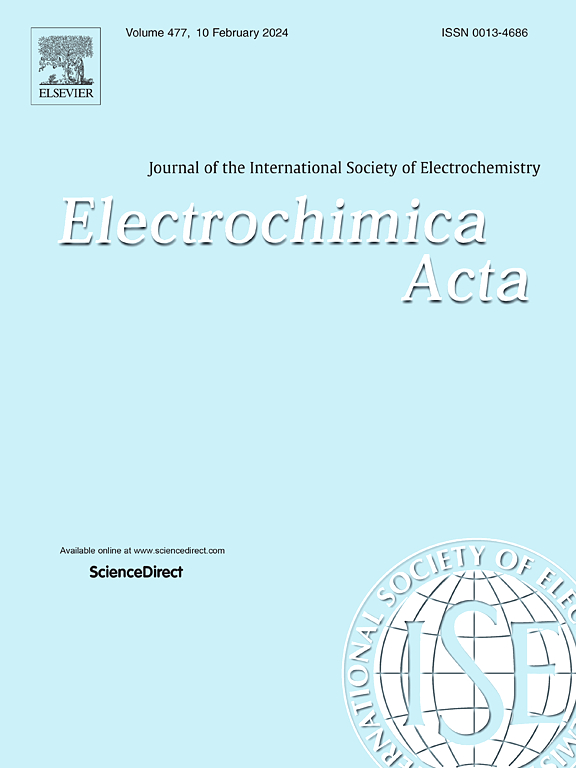椰壳硬碳孔隙结构调控对钠储存能力的影响
IF 5.6
3区 材料科学
Q1 ELECTROCHEMISTRY
引用次数: 0
摘要
生物质衍生的硬碳(HC)由于其广泛的可用性、低成本和强的可调性而引起了人们的极大关注。但其相对较低的可逆容量和初始库仑效率(ICE)阻碍了其商业化。本研究提出了一种椰子壳衍生硬碳(CSHC)作为钠离子电池负极材料的制备策略。通过化学活化与高温碳化相结合,形成了独特的多孔结构。通过对碱浸渍浓度和炭化温度的优化,优化后的CSHC-15-1400的比容量达到372 mAh g-1, ICE达到91.6%。结果表明,设计合理的多孔结构和适当的石墨层间距可显著提高HC材料的储钠容量和循环稳定性。此外,循环伏安(CV)动力学分析和恒流间歇滴定技术(git)试验揭示了CSHC-15-1400在斜坡和高原地区独特的钠储存机制,为进一步提高HC材料的性能提供了理论见解。该研究为生物质硬碳在储能应用中的商业化提供了一种新的途径。本文章由计算机程序翻译,如有差异,请以英文原文为准。


Effect of pore structure regulation in coconut shell-derived hard carbon on sodium storage capacity
Biomass-derived hard carbon (HC) has garnered significant attention due to its wide availability, low cost, and strong tunability. However, its relatively low reversible capacity and initial Coulombic efficiency (ICE) hinder its commercialization. This study proposes a preparation strategy for coconut shell-derived hard carbon (CSHC) as an anode material for sodium-ion batteries. Through chemical activation combined with high-temperature carbonization, a unique porous structure is developed in the CSHC. By optimizing the alkali impregnation concentration and carbonization temperature, the optimized CSHC-15–1400 achieves a high specific capacity of 372 mAh g-1 and an ICE of 91.6 %. The results indicate that a well-designed porous structure and appropriate graphite interlayer spacing significantly enhance the sodium storage capacity and cycling stability of the HC material. Moreover, cyclic voltammetry (CV) kinetics analysis and galvanostatic intermittent titration technique (GITT) tests revealed the unique sodium storage mechanisms of CSHC-15–1400 in both the slope and plateau regions, providing theoretical insights for further improving the performance of HC materials. This study offers a novel approach for the commercialization of biomass-derived hard carbon in energy storage applications.
求助全文
通过发布文献求助,成功后即可免费获取论文全文。
去求助
来源期刊

Electrochimica Acta
工程技术-电化学
CiteScore
11.30
自引率
6.10%
发文量
1634
审稿时长
41 days
期刊介绍:
Electrochimica Acta is an international journal. It is intended for the publication of both original work and reviews in the field of electrochemistry. Electrochemistry should be interpreted to mean any of the research fields covered by the Divisions of the International Society of Electrochemistry listed below, as well as emerging scientific domains covered by ISE New Topics Committee.
 求助内容:
求助内容: 应助结果提醒方式:
应助结果提醒方式:


